Bold & Beautiful: Red Flowers That Steal the Garden Spotlight
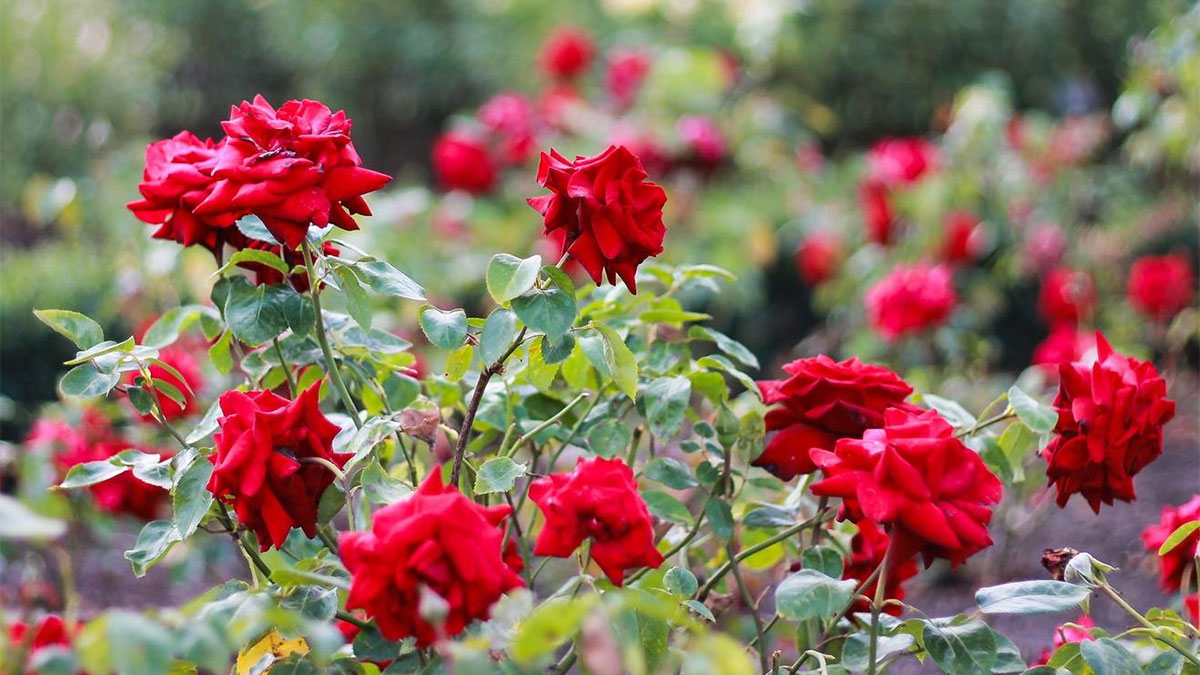
Red flowers are the showstoppers of the garden world. Their rich hues bring instant drama, draw the eye, and infuse garden beds with passion and energy. Whether you’re crafting a romantic retreat or adding bold color to borders, red blooms deserve a place in your planting plans.
Why choose red flowering plants?
Red is one of the most impactful colors you can introduce into a garden. It naturally draws the eye, adds a sense of energy, and can make even a small space feel more vibrant. Whether you’re creating a romantic nook or a dramatic border, red flowers lend themselves to powerful garden design.
Popular red flowering plants to include in your garden
Red roses (Rosa spp.)
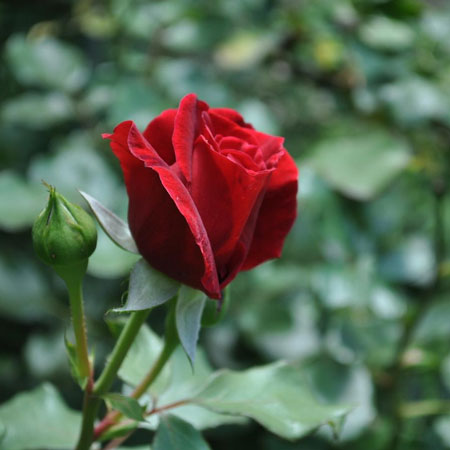
Red roses are classic symbols of beauty and love, with many cultivars offering deep, rich hues. They thrive in full sun with well-drained soil and benefit from regular pruning and deadheading. Use them in mixed borders or as standalone statement shrubs.
Red dahlias

Dahlias provide bold structure and brilliant red tones from summer through early fall. They prefer fertile, well-draining soil and full sun. In colder climates, tubers should be lifted and stored indoors over winter to protect them from frost.
Bee balm (Monarda didyma)
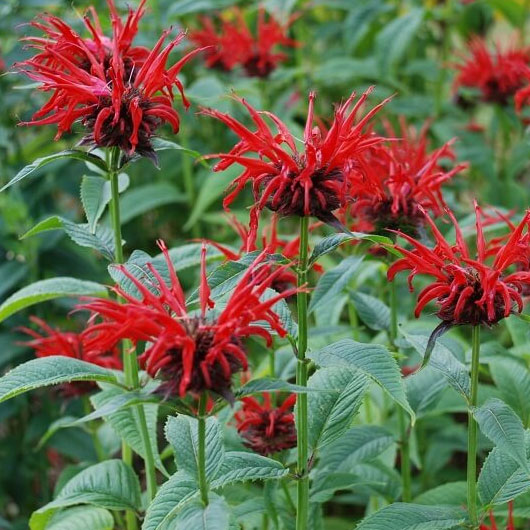
Bee balm boasts shaggy, bright red blooms that are highly attractive to hummingbirds and bees. It thrives in moist soil and full sun but can spread aggressively, so dividing every few years helps manage growth. Pair it with ornamental grasses or other pollinator-friendly plants.
Related: How to Grow Bee Balm (Monarda) for Beauty and Herbal Healing
Red zinnias
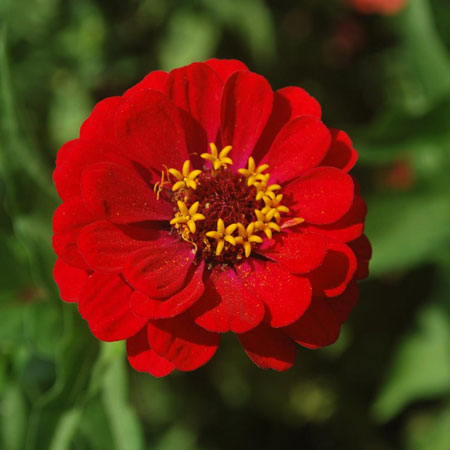
Zinnias are cheerful, low-maintenance annuals perfect for gardeners of all skill levels. Red varieties like ‘Benary’s Giant Scarlet’ add pop to flower beds and cutting gardens. Deadheading regularly encourages non-stop blooms.
Scarlet sage (Salvia splendens)
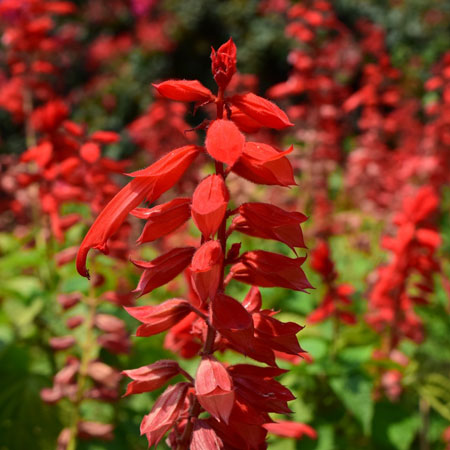
Scarlet sage offers spikes of vivid red that persist from spring to frost. It does best in sunny spots and adapts well to both containers and beds. Its nectar-rich flowers are magnets for hummingbirds and butterflies.
Red hibiscus (Hibiscus rosa-sinensis and H. moscheutos)
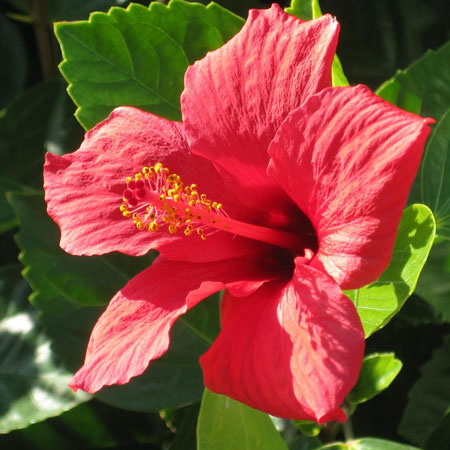
Red hibiscus brings a tropical feel to gardens with its oversized blooms. Hardy varieties like H. moscheutos can tolerate colder temperatures, while tropical types need winter protection. Regular watering and pruning help maintain healthy growth.
Related: How to Grow and Care for Hibiscus
Red tulips
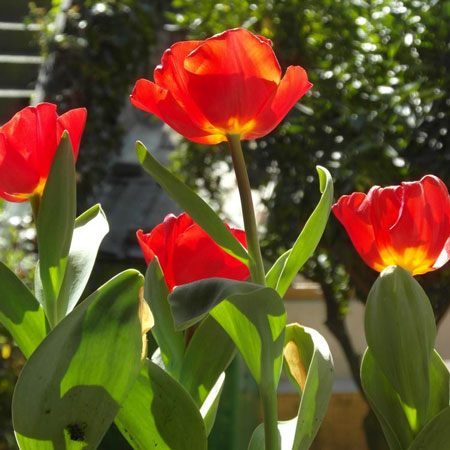
Red tulips offer a striking start to spring and pair beautifully with other early bloomers like daffodils. Plant bulbs in fall in a sunny location with well-drained soil. Choose varieties like ‘Red Impression’ for bold color and reliable returns.
Crocosmia ‘Lucifer’
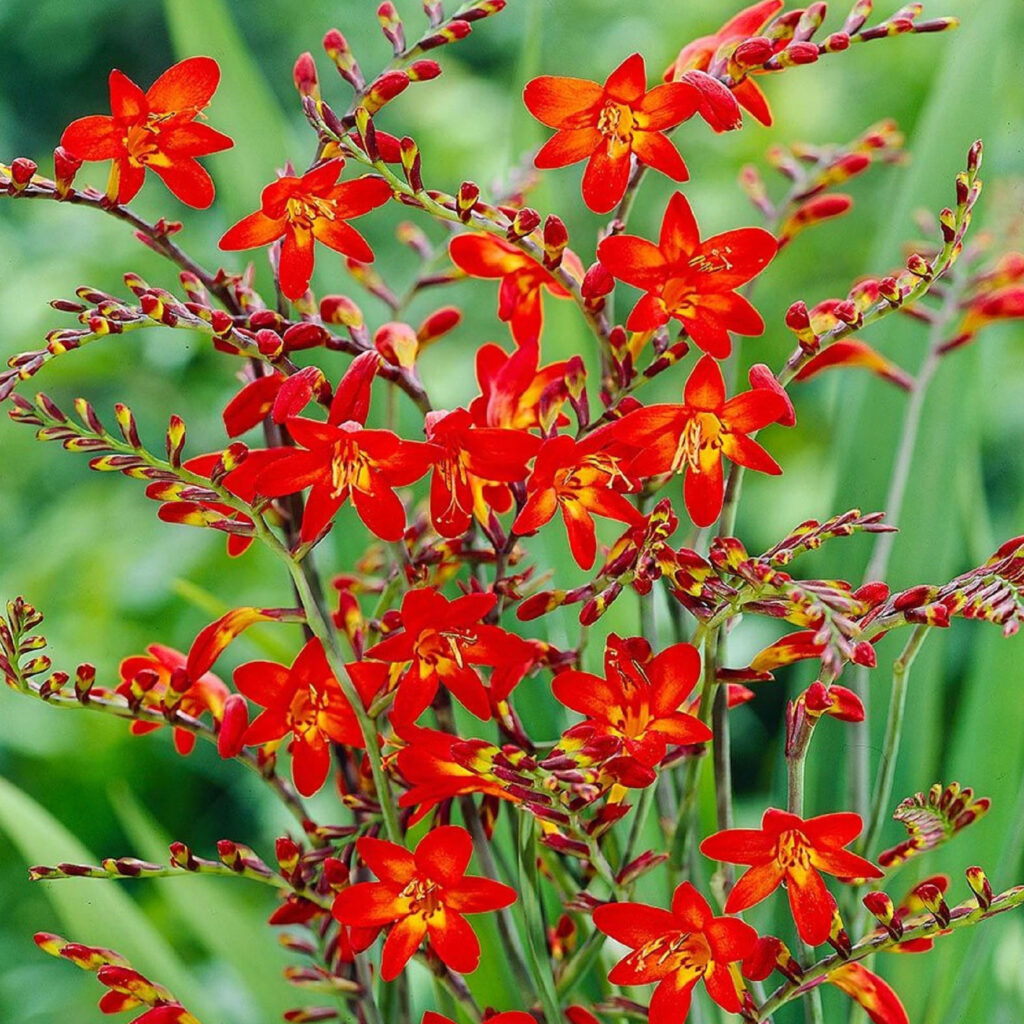
This eye-catching plant features arching stems with fire-red flowers that bloom in mid to late summer. It prefers full sun and moderately moist soil and works well in mixed borders or as a backdrop plant. Divide clumps every few years to keep them vigorous.
Red geraniums (Pelargoniums)
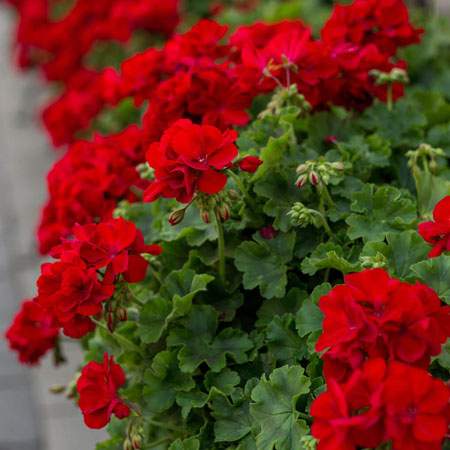
Geraniums bring vibrant red blooms to sunny patios, window boxes, and borders. These heat-tolerant plants thrive in containers and need only moderate watering and deadheading. In colder regions, bring them indoors over winter to continue enjoying their color.
Design tips for using red flowers in your garden
To make the most of red blooms, balance them with complementary colors like white, silver, or green. Grouping red flowers in odd numbers can create a more natural and eye-catching effect. Use red strategically as a focal point or to draw attention along a path or entryway.
Conclusion
From fiery dahlias to timeless red roses, these standout blooms have the power to transform any space. With the right care and thoughtful placement, red flowers can be the heart of your garden, turning heads and lifting spirits all season long.
